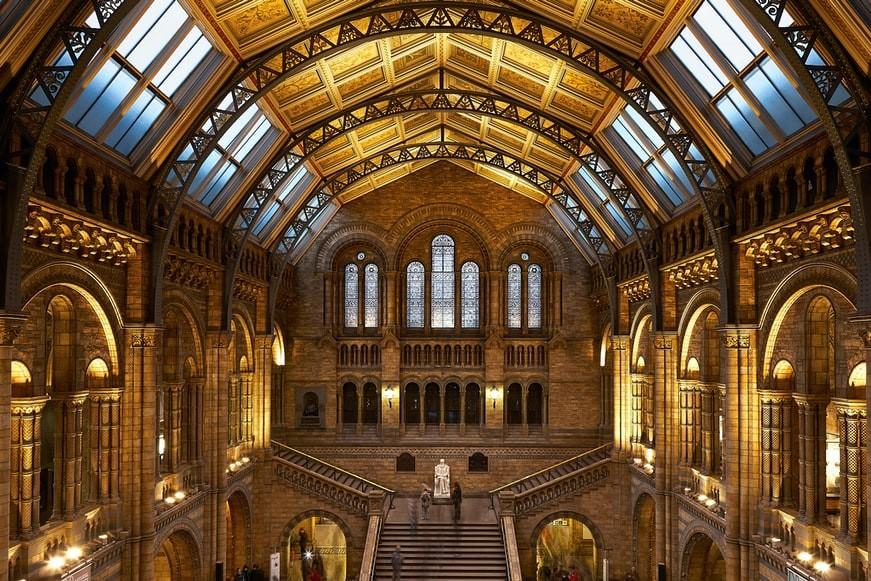Many attempts have been made to define 'European History.' However, the theory didn't even exist till the introduction of the concept of 'Europe' on its own, which can be traced back to the Early Modern period.
By the late eighteenth century, Peter the Great's reforms had expanded the concept of Europe beyond the territory anticipated by Ancient geographers to embrace a substantial portion of Russia.
As a result, attempts to correlate European history with that of the European Union member states were met with little success in recent years.
However, the debate over the cultural limits of European history rages on, and it is an essential element of any study of the topic.
With that said, European history contributes the most to world history, and anyone studying the discipline should be interested. So keep reading as we discuss:


History Of Europe
European history arranges and presents historical affairs of the European people ever since the commencement of written records.
During the Indo-European migrations, i.e., the Neolithic era, many people moved from the east and south-east with significant material and cultural interchange.
Then the classical antiquity period commenced with the rise of the Greek city-states. Eventually, the Roman Empire expanded to rule the whole of the Mediterranean region.
In 476 AD, the Western Roman Empire took a big blow, and it was after this fall of theirs the Middle Ages began.
This was when the Protestant Reformation established churches predominantly in England, Germany, and Scandinavia.
And subsequently, after 1800, wealth came to Western Europe and Britain, a period coined as the Industrial Revolution. As a result, the major European powers established colonies throughout:
- The Americas
- Some areas of Asia
- Africa
The next forthcoming millennium was highlighted by further bloodshed and fighting. Hence, many people died in the twentieth century during both World Wars.
And if that wasn't enough, from 1947 through 1989, the Cold War dominated European geopolitics. However, there was a bright side: European countries got closer after the collapse of the Iron Curtain.
Why Study European History
What nations or world areas are most significant to the United States and the lives of Americans? China? What about the Middle East? Those locations are critical, but examine the situation in Europe.
Its historical significance is undeniable: it is the origin of many or most of the concepts that have molded the United States and our globe, including:
- Democracy
- The Nation-state
- Industrialization
- Capitalism
- Railroad
- The printing press
- Fundamental physics principles
Europe Is And Will Be The Closest Partner And Ally In The Twenty-First Century
The United States and Europe often operate side-by-side on worldwide discussions, economic ties, the environment, or nearly any other global venue.
Both countries have similar:
- Beliefs
- Political systems
- A long history of cooperation
- Tight net of international organizations
Europe is also the top contributor of foreign aid to poorer countries, so it plays a vital role in their interactions with the undeveloped nations.
This network of relationships provides you with many education and job alternatives.
In addition, the US-European connection offers more opportunities than just about any other, whether in government, non-governmental organizations, media, business, law, or other disciplines.
Europe provides the most diverse opportunities for international networking. Given the US-European economic, political, and cultural ties, it is not surprising that more than half of Undergraduate pupils studying overseas do so in Europe.
By Far The Most Significant Economic Partner Is Europe
The economic tie between the United States and Europe is the largest and deepest in the world. For example, in 2008, US FDI in the Netherlands alone — a country of 16 million people — was nearly ten times as large as US FDI in mainland China.
The vast bulk of FDI is sent to Europe, while Europeans send 71% of their FDI to the US. So, though we trade with Asia more than Europe, the latter's investment partnerships are worth far more money and run far deeper into our economy.
Knowing about Europe — and, in particular, studying a European language — may help you position yourself to benefit from this relationship, which is the world's most significant source of wealth creation.

Why Is Studying European History Important?
Earlier, you were told how studying European history would benefit you. In this part, we tell you its relevance to the economy.
This will give you a clear vision of why you should enroll in those high school history lessons.
Cultural legacy is vital to the history and identity of Europe. Moreover, it is a crucial element of the European economy, and fostering cultural riches would improve growth and jobs.
In 2018, the European Year of Cultural Heritage sought to intensify the contributions to Europe's rich cultural traditions.
This was done to spur the economy and society while promoting culture as an essential component of the EU's worldwide presence.
Dozens of events will take place around Europe throughout the year to engage people more intimately with cultural heritage at the local, regional, national, and European levels.

History Taught In US Schools
Since this topic is one of many subsets of the social studies area, it is helpful to consider the entire field before focusing on American history.
Most high school students in the United States are made to focus on two broad world history areas:
- The prominent points of European history (the Magna Carta, the Roman Empire, the Napoleonic Wars, etc.)
- European history that effectively intersects with American history (the voyages of Columbus, the World Wars, European emigration to The New World, etc.)
And here is why American students are so keenly taught these themes:
Students specializing in history are obliged to take more American and European history courses than in any other part of the world combined.
This is because there aren't enough history lessons in other parts of the world that are just as essential to learn about.
Course Breakdown
Wondering what world history in high school is? You can take up to six introductory courses, at least one of which is necessary before proceeding to upper-division history studies.
Among the acceptable courses are:
- World History
- Approaches to Women's History
- European Civilization in its World Context
- The War of Ideas in European and International History
The majority, if not all, of these courses, are on Western culture. None of them focus entirely on the East, Middle East, or South America.
Students need to take a minimum of one course in American, European, or global history as part of the necessary eight to ten upper-level subjects.
The Lack Of Diverse Courses
History majors in some Undergraduate programs must take at least two courses in America and Europe, and just one course in the rest of the globe.
These courses, however, do not provide pupils with a comprehensive worldview.
Therefore, the history department at universities should broaden its course choices to include additional classes on non-Western and non-European history.
History majors are told that American and European history should be the focus of their study, with the rest of the world covered in a single semester.
Teaching history solely from a Western perspective degrades the achievements of different cultures and reinforces Eurocentric ideas.

What Is Taught In World History
Studying world history teaches students to think historically by connecting and comparing events and individuals across time and location.
Essentially, students learn to think about history from a cross-cultural and comparative standpoint in high school history classes.
A thorough high school world history curriculum should include a wide range of themes from antiquity to the current day, including:
- The Neolithic Revolution and Human Origins
- Roman Empire Decline
- Medieval Europe's art and culture
- Parallels and distinctions between contemporary and ancient imperialism.
- Through colonialism, Europeans gained control over Africa
- Cold War strategies employed by the United States, the Soviet Union, and its allies
- The global influence of mass media and medical technologies
Europe's Influence In The United States
From 1800 to 1850, Europe's impact on the United States had different faces and attitudes. Then, as the people of America developed their distinct identity, Europe's influence started to wane.
People in the United States established new religious organizations, enterprises, and philosophies, severing links with Europe's influence.
However, Europe's impact in the United States remained visible from 1800 to 1850, as seen by the large influx of European immigrants to the country.
The movement of people led to an exchange of these prominent features:
Religion
European religious traditions have always impacted religion in the United States. However, from 1800 to 1850, the entrance or expansion of new faiths in the United States deviated from established European faiths and practices.
Congregationalists such as Puritans and Catholics and Anglicans such as Lutherans were quickly supplanted by other religions such as Methodists and Baptists.
The Second Great Awakening in the United States in the 1830s resulted in substantial changes to European influence on religion in the United States.
Philosophies
Since the discovery of North America, European ideologies have been transported from Europe to the United States.
This pattern lasted throughout the early nineteenth century. As a result, philosophies such as German Romanticism were eventually replaced by a particularly American type of Romanticism.
Other ideologies, such as Transcendentalism, contrasted European countries' and churches' dogmatic understandings of God.
The two doctrines also attempted to forge a distinct American identity to distance themselves from conventional European influences.
Revolutionary Warfare
The emergence of the European Industrial Revolution was the most significant European impact in the early nineteenth century in the United States.
The industrial revolution started in Europe in the 1760s, and the United States began to fill up with manufacturing facilities and small industries within a few years.
These industries need workers to make commodities. As a result, immigrants started to arrive in the United States from Germany, England, Scotland, Ireland, and France.
Each group of immigrants took their native country's values, culture, and customs with them. From 1800 to 1850, the blending of these concepts influenced the United States.
The Arts And Architecture
Architecture and the arts were two areas where Europe's impact on the United States remained consistent.
Artists began painting in various genres associated with European movements, such as Romanticism. Hence, most buildings were built in Greek and English Gothic styles.
Are You Seeking Expert Help To Better Understand European History?
The history department should regard all forms of history equally and not overlook non-Western parts of the globe.
The Institution must be found liable for its focus on diversity by expanding the history department's curriculum.
However, the course demands vary at high school, university, and middle school levels. Therefore, if you want to become a whizz at European history, you should look for specific professional tutoring.
At Superprof, our tutors delve into the nitty-gritty when teaching about European history or any history. Learn history as you understand how it plays a vital part in your life in today's time.
Simply visit Superprof, create an account, and find yourself a teacher near your location who can help you achieve your specific goals.















